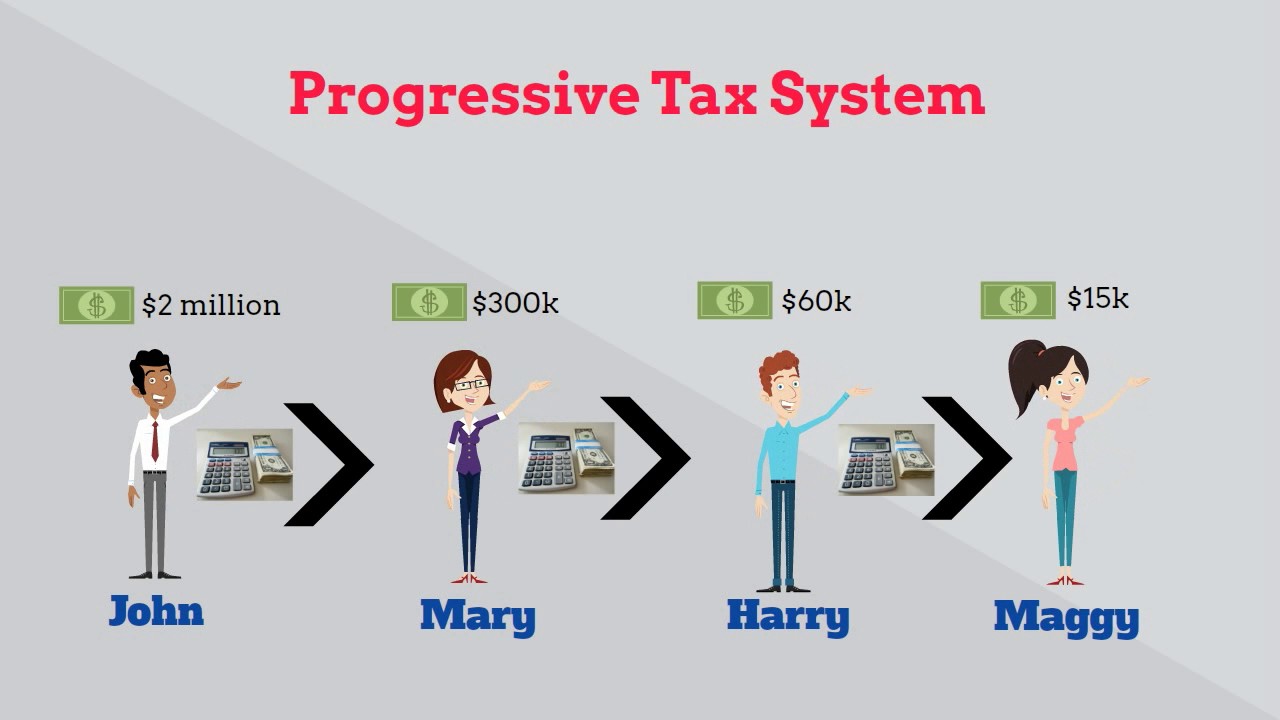

Finance
How To Invest In Walmart Stocks
Published: January 17, 2024
Learn how to invest in Walmart stocks and grow your finance portfolio with expert tips and strategies. Maximize your returns in the finance industry.
(Many of the links in this article redirect to a specific reviewed product. Your purchase of these products through affiliate links helps to generate commission for LiveWell, at no extra cost. Learn more)
Table of Contents
- Introduction
- Understanding Walmart Stocks
- Benefits of Investing in Walmart Stocks
- Factors to Consider Before Investing in Walmart Stocks
- How to Open a Brokerage Account
- How to Start Investing in Walmart Stocks
- Strategies for Investing in Walmart Stocks
- Risks Associated with Investing in Walmart Stocks
- Tips for Successful Investing in Walmart Stocks
- Conclusion
Introduction
Investing in the stock market can be a lucrative way to grow your wealth, and one company that has consistently shown strong growth and stability is Walmart. As one of the largest retail corporations in the world, Walmart has a reputation for providing essential goods to consumers at affordable prices. If you’re considering venturing into the stock market and have an interest in the retail sector, investing in Walmart stocks may be a wise choice.
Walmart stocks, listed under the ticker symbol WMT, offer investors an opportunity to own a piece of this retail giant. By owning Walmart shares, investors can potentially benefit from the company’s continued expansion and its ability to adapt to changing consumer trends.
Before delving into the world of Walmart stocks, it’s important to understand the basics of stock investing. Stocks represent shares of ownership in a company and can be bought and sold on the stock market. As a shareholder, you have the potential to earn profits through capital appreciation and dividends.
Investing in stocks, including Walmart stocks, comes with certain risks. The value of the stocks can fluctuate based on various factors such as market conditions, company performance, and global economic trends. Therefore, it’s essential to thoroughly research and understand the company and market dynamics before making any investment decisions. Additionally, it’s advisable to consult with a financial advisor to assess your risk tolerance and develop an appropriate investment strategy.
In this comprehensive guide, we will explore the benefits of investing in Walmart stocks, factors to consider before investing, how to open a brokerage account, and strategies for investing in Walmart stocks. We will also discuss the risks associated with investing in Walmart stocks and provide some valuable tips for successful investing.
Keep in mind that investing in the stock market involves a level of risk, and past performance does not guarantee future results. It is crucial to conduct thorough research, seek professional advice, and make informed decisions based on your financial goals and risk tolerance.
Understanding Walmart Stocks
Before investing in Walmart stocks, it is important to have a basic understanding of what they represent and how they function within the stock market.
Stocks, or shares, are units of ownership in a company. When you purchase Walmart stocks, you are essentially buying a portion of the company. As a shareholder, you have certain rights, such as the right to vote on company matters and the right to receive a share of the company’s profits in the form of dividends.
Walmart stocks are publicly traded on stock exchanges, such as the New York Stock Exchange (NYSE), under the ticker symbol WMT. The stock price is determined by supply and demand in the market. Factors such as the company’s financial performance, news, and overall market conditions can influence the stock price.
One key aspect to consider when investing in Walmart stocks is the company’s financial health and performance. Walmart has a strong track record of generating consistent revenue and profits. As one of the largest retailers globally, it benefits from economies of scale and a wide customer base.
It’s also important to pay attention to Walmart’s quarterly and annual financial reports. These reports provide insights into the company’s revenue, expenses, profit margins, and growth prospects. Investors often analyze these reports to assess the company’s financial stability and make informed decisions.
Another crucial aspect to understand about Walmart stocks is their historical performance. Examining the stock’s price history and trends can give you an idea of how the stock has performed in the past and its potential for future growth. However, it’s important to remember that past performance does not guarantee future results.
Investors may also want to consider Walmart’s dividend history. Dividends are a portion of a company’s profits that are distributed to shareholders. Walmart has a history of paying dividends, making it an attractive option for investors looking for income-generating stocks. However, it’s important to note that dividends are not guaranteed and can be adjusted or suspended at any time.
Understanding the basics of stock investing and the specific factors related to Walmart stocks can help you make informed investment decisions. It’s crucial to conduct thorough research, stay updated on the company’s performance, and consider your own financial goals and risk tolerance before investing in Walmart stocks.
Benefits of Investing in Walmart Stocks
Investing in Walmart stocks can offer several benefits for investors. Here are some key advantages to consider:
- Stability and Resilience: Walmart is a well-established company with a long history of success. It has proven its ability to weather economic downturns and adapt to changing consumer preferences. This stability can provide investors with confidence in the company’s ability to generate steady returns over the long term.
- Global Reach: As one of the largest retail corporations globally, Walmart operates in multiple countries and serves millions of customers. Its extensive network of stores, e-commerce platforms, and supply chain infrastructure gives it a significant global presence. This wide reach provides opportunities for continued growth and expansion, which can benefit investors in the form of increasing stock value.
- Strong Financial Performance: Walmart has consistently delivered solid financial results. It has a track record of generating substantial revenue and maintaining healthy profit margins. The company’s financial stability and profitability make it an attractive option for investors seeking a reliable and potentially lucrative investment.
- Dividend Payments: Walmart has a history of paying dividends to its shareholders. Dividends can provide investors with a steady income stream, especially for those looking for long-term investment opportunities. The company’s consistent dividend payments demonstrate its commitment to returning value to its shareholders.
- Low Volatility: While the stock market can be volatile, Walmart stocks tend to exhibit lower volatility compared to other sectors. This can make them a suitable option for risk-averse investors looking for more stable investments.
- Defensive Investment: Walmart is considered a defensive investment because it offers products and services that are in demand regardless of the economic climate. Even during economic downturns, people still need essential goods, and Walmart’s low prices and wide range of products make it a go-to choice for many consumers.
It’s important to note that investing in any stocks comes with risks, including the potential for losses and volatility in the market. The mentioned benefits should be considered in conjunction with thorough research and assessment of your own financial goals and risk tolerance.
Before making any investment decisions, it is recommended to consult with a financial advisor who can provide personalized guidance based on your individual circumstances and goals.
Factors to Consider Before Investing in Walmart Stocks
Before investing in Walmart stocks, it’s important to carefully evaluate various factors that can impact the performance and value of the stocks. Here are some key considerations:
- Company Performance: Analyze Walmart’s financial performance, including revenue growth, profitability, and market share. Review the company’s annual reports, quarterly earnings releases, and any relevant news or press releases to gain insights into its current and future prospects.
- Competitive Landscape: Evaluate the competitive environment in which Walmart operates. Consider factors such as the presence and strength of competitors, emerging trends in the retail industry, and Walmart’s ability to maintain a competitive advantage.
- Economic Conditions: Assess the overall economic conditions, both domestically and internationally, as they can have a significant impact on consumer spending patterns and the retail industry. Economic downturns can affect consumer confidence and discretionary spending, potentially impacting Walmart’s sales and profitability.
- Industry Trends: Stay informed about industry trends and technological advancements that may impact Walmart’s business. Factors such as e-commerce growth, shifting consumer preferences, and advancements in supply chain management can affect the company’s long-term growth and relevance.
- Regulatory Environment: Consider the regulatory landscape in which Walmart operates. Changes in labor laws, trade policies, or regulations specific to the retail sector can have an impact on the company’s operations and profitability.
- Social and Environmental Responsibility: Increasingly, investors are placing importance on a company’s commitment to social and environmental responsibility. Evaluate Walmart’s initiatives in terms of sustainability, corporate governance, and ethical practices to determine if it aligns with your values and investment goals.
- Risk and Diversification: Assess your own risk tolerance and determine if investing in individual stocks, such as Walmart, is aligned with your investment strategy. Consider diversifying your portfolio by investing in a mix of stocks from different sectors to spread risk.
It’s crucial to conduct thorough research and due diligence before making any investment decisions. Consider consulting with a financial advisor who can provide personalized guidance based on your individual circumstances and investment goals. By carefully considering these factors, you can make an informed decision about whether investing in Walmart stocks aligns with your investment strategy and risk tolerance.
How to Open a Brokerage Account
In order to invest in Walmart stocks, you will need to open a brokerage account. A brokerage account is a type of financial account that allows you to buy and sell stocks, bonds, and other investments. Here are the steps to open a brokerage account:
- Evaluate Different Brokerage Options: Research and compare different brokerage firms based on factors such as fees, account minimums, investment options, and user experience. Look for a reputable brokerage that offers the services and features that align with your investment needs.
- Select a Brokerage Firm: Once you have assessed various brokerage options, choose the one that best meets your criteria. Visit the firm’s website or contact their customer service to understand the account opening process.
- Complete the Application: Fill out the brokerage account application provided by the firm. You will typically need to provide personal information such as your name, address, social security number, and employment details.
- Submit Required Documentation: Along with the application, you may need to submit supporting documents such as a copy of your identification (e.g., driver’s license or passport) and proof of address (e.g., utility bill or bank statement) to verify your identity.
- Choose the Account Type: Select the type of brokerage account that suits your needs. Common options include individual accounts, joint accounts, retirement accounts (such as IRAs), and custodial accounts for minors.
- Select Funding Options: Determine how you will fund your brokerage account. You can usually choose between bank transfers, wire transfers, or linking your existing bank account to the brokerage account for easy transfers.
- Review and Agree to Terms and Conditions: Carefully review the brokerage firm’s terms and conditions, including fee schedules, trading policies, and account maintenance rules. Make sure you understand and agree to the terms before proceeding.
- Wait for Account Approval: After submitting your application and required documents, the brokerage firm will review your information and approve your account. This process can take a few days to a couple of weeks, depending on the firm’s internal procedures.
- Fund Your Account and Start Investing: Once your account is approved, you will receive instructions on how to fund your account. Transfer the desired amount of funds to your brokerage account and you will be ready to start investing in Walmart stocks.
It’s important to note that each brokerage firm may have slightly different procedures and requirements for opening an account. Make sure to read and follow the instructions provided by your chosen brokerage firm to ensure a smooth account opening process.
Remember to conduct thorough research on the brokerage firm, including checking its reputation and customer reviews, to ensure you select a reliable and trustworthy provider.
How to Start Investing in Walmart Stocks
Once you have opened a brokerage account, you are ready to begin investing in Walmart stocks. Here are the steps to get started:
- Research and Analysis: Before investing, thoroughly research Walmart and its stock. Analyze the company’s financial performance, competitive position, industry trends, and any other relevant factors that may impact the stock’s value. This research will help you make informed investment decisions.
- Set Your Investment Goals: Determine your investment objectives, such as long-term growth, dividend income, or a combination of both. This will help you develop an investment strategy that aligns with your financial goals and risk tolerance.
- Decide on Investment Amount: Determine the amount of money you are willing to invest in Walmart stocks. Consider your financial situation and personal circumstances, and only invest what you can afford to lose in case of any unforeseen market fluctuations.
- Place an Order: After conducting thorough research and setting your investment goals, it’s time to place an order to buy Walmart stocks. Log in to your brokerage account and navigate to the trading platform. Enter the stock symbol “WMT” and indicate the number of shares you wish to purchase.
- Choose Order Type: Select the type of order you want to place. Common order types include market orders, limit orders, and stop orders. A market order will execute the trade immediately at the current market price, while a limit order allows you to set a specific price at which you want to buy the stock.
- Review and Confirm: Before finalizing the trade, review the order details and ensure they are accurate. Double-check the number of shares and the order type. Once you are satisfied, confirm the trade.
- Monitor Your Investment: After purchasing Walmart stocks, actively monitor your investment. Stay informed about any news or developments that may impact the company’s performance and stock price. Regularly review your portfolio and reassess your investment strategy as needed.
- Consider Dollar-Cost Averaging: Instead of investing a lump sum, you may choose to employ a strategy called dollar-cost averaging. This involves investing a fixed amount of money at regular intervals, regardless of the stock price. This strategy can help mitigate the impact of short-term market fluctuations.
- Rebalance Your Portfolio: As part of a well-diversified investment strategy, periodically reassess your portfolio and rebalance it accordingly. Determine if any adjustments are needed to ensure your investments align with your desired asset allocation and risk profile.
Remember, investing in stocks carries risks, and the value of stocks can fluctuate. It’s important to stay informed, be patient, and take a long-term perspective when investing in Walmart stocks or any other stocks in your portfolio. Regularly review your investment objectives and consult with a financial advisor if you need guidance along the way.
Strategies for Investing in Walmart Stocks
When investing in Walmart stocks, it’s important to have a strategy in place to maximize your potential returns and manage risk. Here are some strategies to consider:
- Long-Term Growth: One strategy is to take a long-term perspective and focus on the potential growth of Walmart as a company. By investing with a long-term horizon, you can ride out short-term market fluctuations and potentially benefit from the compounding effect of capital appreciation over time.
- Dividend Income: If you are looking for a steady income stream, you can adopt a strategy focused on dividend income. Walmart has a history of paying dividends, and by investing in the stock, you can receive regular dividend payments. This strategy is suitable for income-focused investors who prioritize stable and predictable cash flows.
- Value Investing: Value investing involves identifying stocks that are considered undervalued by the market. With this strategy, you would analyze Walmart’s financials, compare them to its competitors, and look for potential factors that may have led to an undervaluation of the stock. Value investing aims to capitalize on the market’s tendency to eventually recognize the true value of a company.
- Dollar-Cost Averaging: Implementing a dollar-cost averaging strategy involves investing a fixed amount of money at regular intervals, regardless of the stock price. This strategy allows you to spread your investment over time, potentially mitigating the impact of market volatility. Through dollar-cost averaging, you can take advantage of buying more shares when prices are lower and fewer shares when prices are higher.
- Dividend Reinvestment: If you receive dividends from your Walmart stock holdings, you can choose to reinvest those dividends back into buying more Walmart stocks. This strategy, known as dividend reinvestment, allows you to compound your returns over time and potentially increase your ownership in the company without investing additional funds.
- Monitoring and Adjusting: It’s essential to regularly monitor your Walmart stock holdings and the broader market conditions. Stay updated on company news, earnings reports, and industry trends that may impact Walmart’s performance. Reassess your investment strategy periodically and make adjustments as necessary to ensure it aligns with your financial goals and risk tolerance.
- Portfolio Diversification: While focusing on investing in Walmart stocks can be a viable strategy, it is important to diversify your portfolio. Diversification involves spreading your investments across different asset classes and sectors to reduce risk. Consider investing in a mix of stocks, bonds, and other investment options to achieve a well-diversified portfolio.
Remember, no strategy guarantees success in investing. It’s important to conduct thorough research, stay informed about market conditions, and carefully assess your own financial goals and risk tolerance when implementing any investment strategy. Consulting with a financial advisor can provide you with additional insights and guidance tailored to your specific investment needs and objectives.
Risks Associated with Investing in Walmart Stocks
While investing in Walmart stocks offers potential rewards, it is important to be aware of the risks involved. Consider the following risks before investing:
- Market Volatility: The stock market can be volatile, and the value of Walmart stocks can fluctuate in response to various factors, including economic conditions, industry trends, and company-specific news. Market volatility can lead to sudden and significant changes in the stock price.
- Company Performance: Walmart’s performance can impact its stock price. Factors such as changes in consumer preferences, increased competition, or disruptions in the retail industry can affect the company’s financial results. Poor performance or negative news about Walmart’s operations may lead to a decline in the stock price.
- Economic Factors: The company’s performance is influenced by macroeconomic conditions. Economic downturns can reduce consumer spending, impacting Walmart’s sales and profitability. Changes in interest rates, inflation, and currency exchange rates can also affect the company’s financial performance and stock price.
- Competitive Landscape: Walmart operates in a highly competitive industry. Competitors may successfully implement strategies or innovations that challenge Walmart’s market share and profitability. Walmart must continuously adapt to changing consumer needs and preferences to remain competitive.
- Regulatory and Legal Risks: Changes in laws, regulations, or government policies can impact Walmart’s operations and profitability. Legal disputes, such as lawsuits or regulatory fines, can also affect the company’s financial standings and stock performance.
- Global Factors: Walmart operates internationally and is exposed to geopolitical risks, such as political instability, trade tensions, and currency fluctuations. Economic or political events in countries where Walmart has a significant presence can impact its financial performance and ultimately its stock price.
- Dividend Risk: While Walmart has a history of paying dividends, there is no guarantee that the company will continue to do so. Dividend payments may be adjusted or suspended based on company performance, financial conditions, or management decisions.
- Liquidity Risk: The liquidity of Walmart stocks can vary based on market conditions. In certain situations, it may be difficult to buy or sell shares at the desired price, particularly during periods of market instability.
- General Investing Risks: Investing in stocks carries inherent risks, including the potential loss of investment capital. Stock market downturns, unexpected events, and other factors beyond your control can lead to a decrease in the value of your investment in Walmart stocks.
It’s important to carefully evaluate and understand these risks before investing in Walmart stocks. Consider diversifying your portfolio, conducting thorough research, and consulting with a financial advisor to mitigate some of these risks and make informed investment decisions.
Tips for Successful Investing in Walmart Stocks
Investing in Walmart stocks can be a long-term strategy to grow your wealth. Here are some tips to help you make informed investment decisions and increase your chances of success:
- Thoroughly Research and Understand Walmart: Before investing, conduct comprehensive research on Walmart, including its financial performance, competitive position, and industry trends. Understand the company’s business model, strengths, and potential risks to make informed investment decisions.
- Set Realistic Expectations: Be realistic about your investment expectations. Understand that stock prices can fluctuate in the short term, and your investment may experience periods of volatility. Take a long-term perspective and focus on the company’s fundamentals and growth potential.
- Stay Informed: Regularly monitor Walmart’s financial reports, news releases, and industry trends. Stay up-to-date with market conditions that may impact the company’s performance and stock price. Being well-informed can help you make timely investment decisions.
- Diversify Your Portfolio: While Walmart may be a solid investment, it’s wise to diversify your portfolio across different industry sectors and asset classes. This helps spread risk and reduce the impact of any single investment on your overall portfolio.
- Assess Your Risk Tolerance: Determine your risk tolerance before investing. Understand how much risk you are willing to take and align your investment strategy accordingly. Consider factors such as your investment timeline, financial goals, and personal circumstances when assessing your risk tolerance.
- Consider Dividend Reinvestment: If you receive dividends from your Walmart stocks, consider reinvesting those dividends back into buying more shares. This can help compound your returns over time and increase your ownership in the company without investing additional funds.
- Monitor and Review Your Portfolio Regularly: Keep a close eye on your portfolio’s performance and regularly review its composition. Reassess your investment strategy, make adjustments as needed, and rebalance your portfolio periodically to ensure it aligns with your financial goals.
- Stick to Your Investment Plan: Develop a well-defined investment plan and stick to it. Avoid making impulsive investment decisions based on short-term market fluctuations. Stay disciplined and focused on your long-term investment strategy.
- Consult with a Financial Advisor: Consider seeking professional advice from a financial advisor who can provide personalized guidance based on your individual financial goals and risk tolerance. A financial advisor can help you develop an investment plan and provide insights into Walmart stocks and the broader market.
- Be Patient: Successful investing requires patience. Avoid being swayed by short-term market noise or making hasty decisions based on emotions. Stay focused on your long-term goals and trust in the fundamental strength of Walmart as a company.
Remember, investing in stocks involves risks, and there are no guaranteed profits. By following these tips, conducting thorough research, and investing with a long-term perspective, you can position yourself for potential success in investing in Walmart stocks.
Conclusion
Investing in Walmart stocks can be a rewarding opportunity for investors looking to capitalize on the retail sector’s growth and stability. Walmart, as one of the largest retail corporations in the world, offers investors the potential for long-term growth and the opportunity to benefit from its strong financial performance and global presence.
Before investing in Walmart stocks, it is crucial to thoroughly research and understand the company, its competitive landscape, and the broader market conditions. Evaluate the risks associated with investing in Walmart stocks, such as market volatility, economic factors, and regulatory risks. By considering these factors, you can make informed investment decisions and mitigate potential risks.
Implementing strategies such as long-term growth, dividend income, or value investing can help investors align their investment objectives with their risk tolerance and financial goals. It’s important to stay informed, regularly monitor your investment, and adjust your portfolio as needed to ensure it remains in line with your investment strategy.
Successful investing in Walmart stocks requires patience, discipline, and a long-term perspective. By staying focused on the company’s fundamentals, conducting thorough research, diversifying your portfolio, and seeking professional advice when needed, you can position yourself for potential success in your investment journey.
It’s important to note that investing in stocks entails risks, and past performance does not guarantee future results. Take into consideration your own financial situation, risk tolerance, and investment objectives before making investment decisions.
In conclusion, investing in Walmart stocks can be a compelling opportunity for investors, but it requires careful analysis, a well-defined investment strategy, and an understanding of the associated risks. By following the tips and strategies provided in this guide, you can make more informed decisions and increase your chances for success in investing in Walmart stocks.














